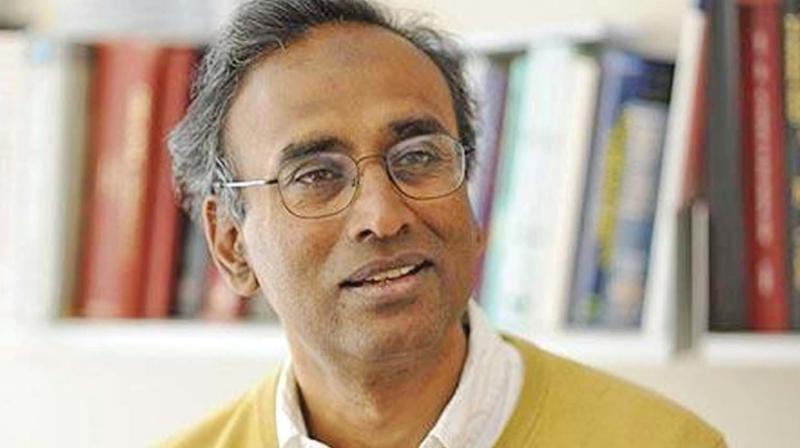Decoding a Nobel Laureate in Chennai
The speech was occasionally filled with dry humour and captured his journey as a 19-year old PhD student to Nobel Laureate.

Chennai: It is clear that even nearly after a decade of winning one of the coveted prizes in science, Nobel laureate and molecular biologist Venkataraman Ramakrishnan is still not comfortable with all the attention he gets.
He was awarded Nobel prize for chemistry in 2009 along with Thomas Steitz, of Yale University, and Ada Yonath, of the Weizmann Institute of Science, Jerusalem.
“It is for making an important discovery or advance in one field. You can be luck for being in the right place and right time or stumbled on the phenomenon. So, it doesn't mean you are a great scientist,” he says.
Venkatraman Ramakrishnan was given the award for working out the exact structure of a key part of the ribosome, the tiny molecular machine in the cells of our body - that turns the genetic code of living beings into the proteins from which they are made.
In a little more than an hour long speech here on Friday, he held the audience in rapt attention while explaining the contents of his new book called Gene Machine which captures his research and life.
The speech was occasionally filled with dry humour and captured his journey as a 19-year old PhD student to Nobel Laureate.
Unlike other scientists, Venkataraman took an important decision after completing PhD in physics and switched over to the field of biology. He joined the graduate course at the University of California after six weeks of getting his PhD.
“I knew if I had stayed on in Physics I would be doing most of the time boring calculations that didn't really improve the understanding. Meanwhile, every issue of Scientific American had carried breakthrough research in biology,” he explained the reason behind his switching over to biology.
“We knew a lot about what ribosome did, but you knew nothing about how it did and that in the mid-1990s. I knew ribosomes were a big fundamental problem in science,” he explained.
But there are four groups including that of Ada Yonath was working to solve that puzzle.
“It was a four-way race. I decided to move to MRC Laboratory of Molecular Biology in the UK to propel my research. I had to take 40% pay cut and my colleagues were not convinced with that decision,” he said.
They had found how genes codes for a particular protein and the ribosome takes that piece of DNA code and uses it to assemble chains of amino acids until a protein is formed.
“That is the central dogma which explains how information stored in our DNA is transformed into the proteins that make up a living being,” he noted.
“In 2009, I was as surprised as anybody else and couldn't believe they pick me as one of the three for Nobel Prize,” he told the audience.
When one of the students asked him whether he had second thoughts about moving to biology in any time of his career, he said, “I always did. You were never sure until it worked out.”
The answer is simple and modest. So does Venkataraman Ramakrishnan.

